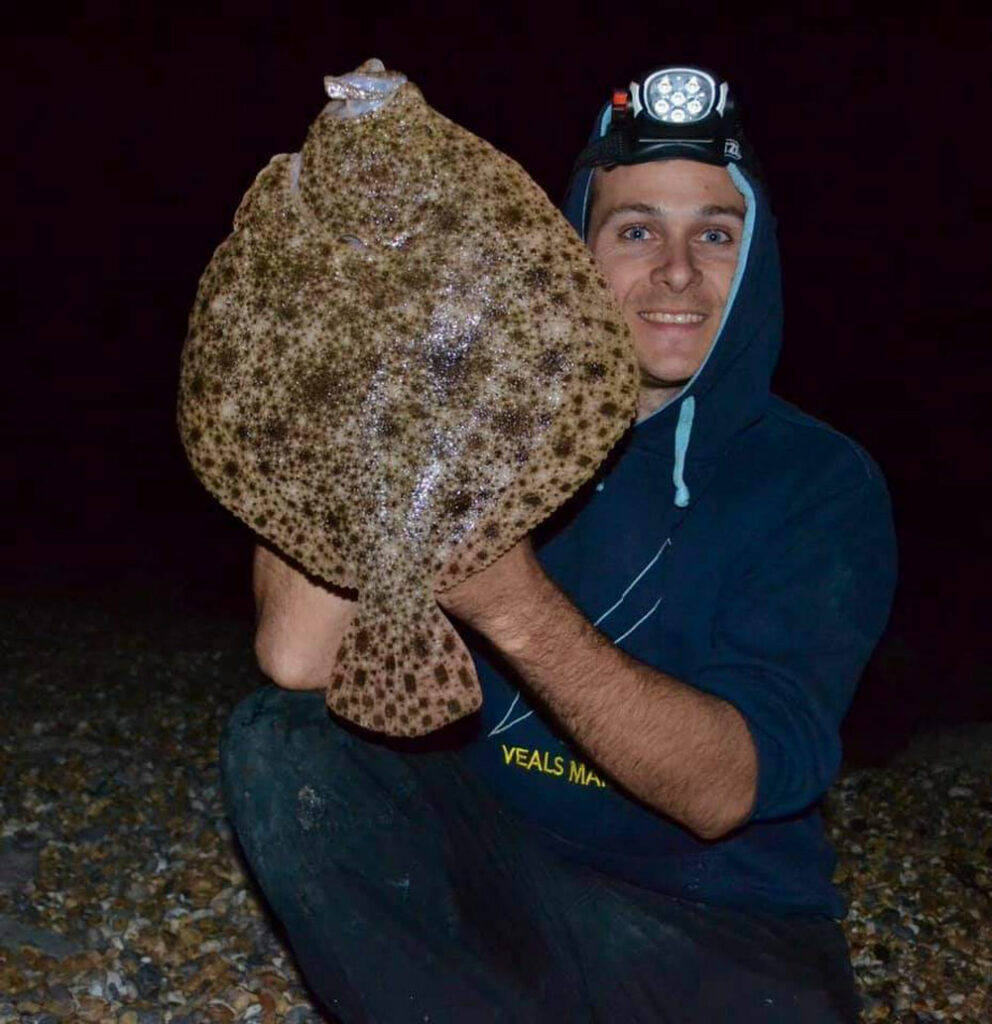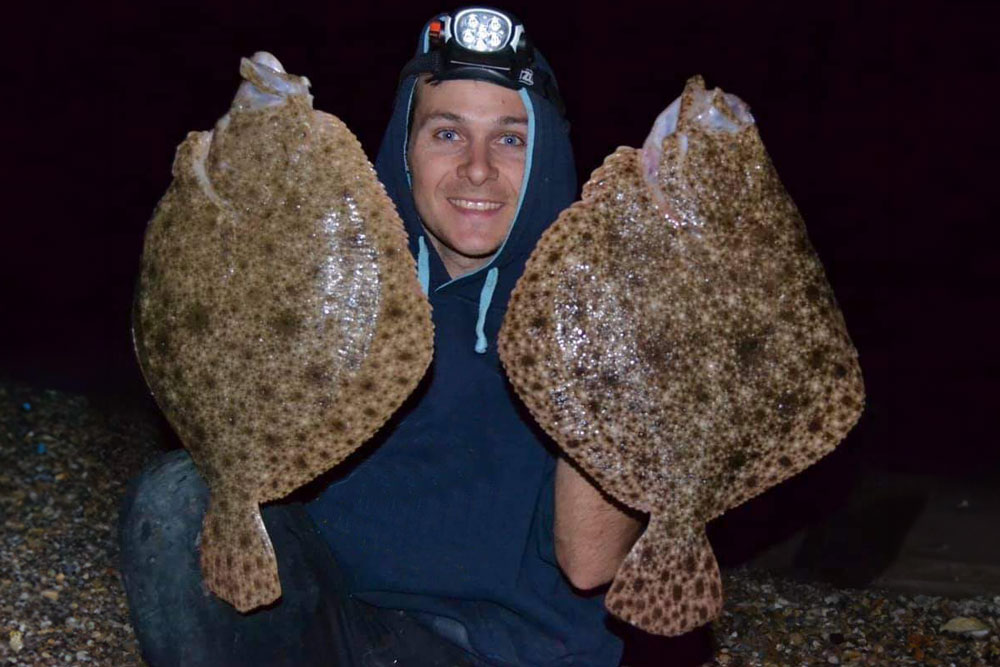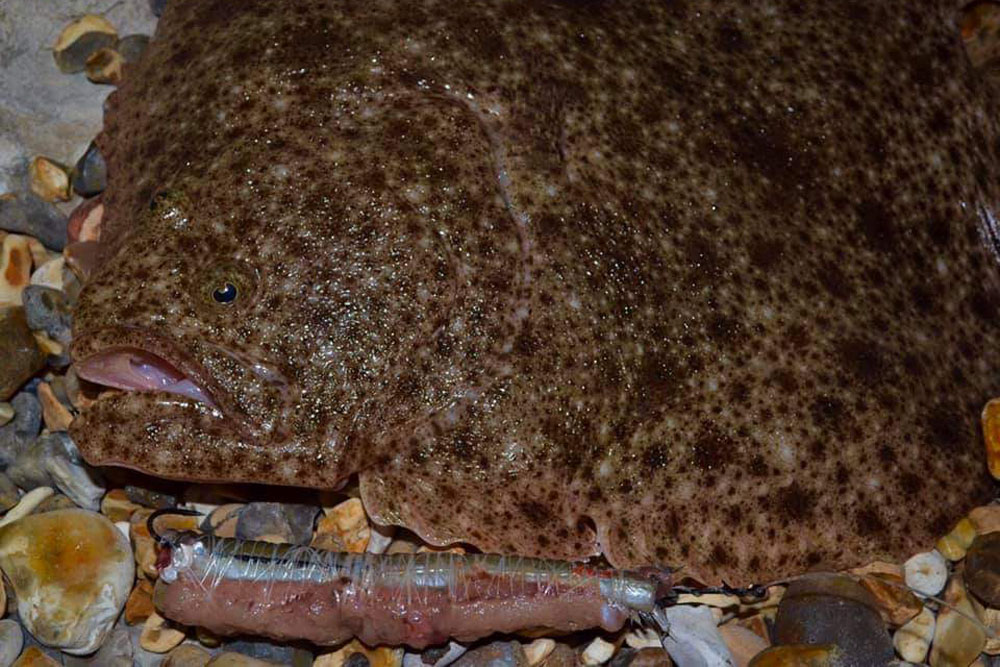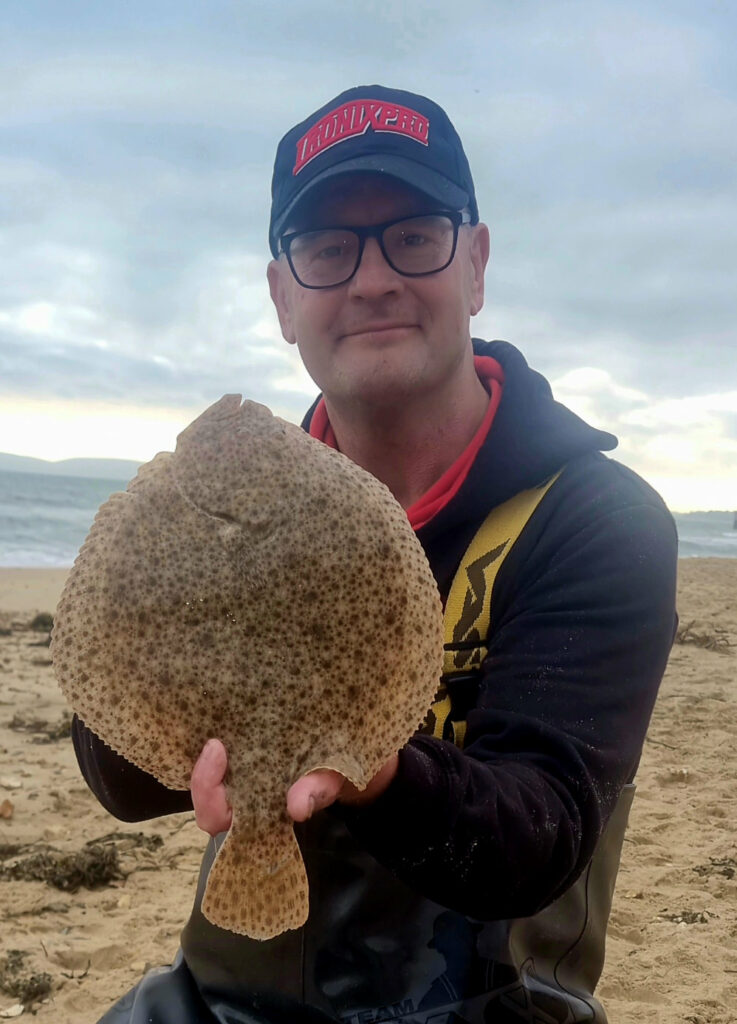Small, hand-sized turbot are a regular catch on many south and west coast surf beaches. Catching sizeable turbot is less easy, but they are present if you spend the time and adapt your tactics to suit their feeding patterns. The majority of turbot move offshore when they reach a weight of about a pound or so, but not all. Some seem to adapt to a life of living in relatively shallow water very close to shore making forays into the tide line to exploit specific food sources as they become available.

Season
The smaller fish can be caught throughout the year, but the bigger fish show at specific times when inshore activity is heightened. These are the spring period from March to June, and then the autumn encompassing September to November. The spring period coincides with sandeel becoming more active, plus there are greater numbers of small flatfish tight to shore that offer an alternative food source. The autumn period sees the whiting numbers explode, and it’s these that pull the bigger turbot back inshore.
Habitat
On surf beaches, the smaller turbot run the full length of the surf line and are usually less than 25-yards out. The bigger turbot look for specific stations where food is more likely to be brought to them. These include the mean low tide line where a distinct shallow incline of sand that gives out into slightly deeper water, which on surf beaches is often flattish rippled sand. Deeper gullies that run along the beach carry the tide, and the turbot will drop into these and hole up. Also look out for areas where there are shallow depressions, wider areas of small shallow sandbanks, and also the edges of any patches of rougher ground that join onto clean sand.
Some of the bigger turbot, fish in the 3 to 5lb range, are typically found at the heads of small western estuaries. These small estuaries will have a defined shallow bar at their mouth. The turbot will be on the seaward side of the bar, but also move inside the mouth of the estuary and live on the edges of the deeper main channel, mainly on clean sand, but also near seed mussel beds if these are present.
Weather and Tides
Weather patterns need to be fairly settled, producing calmer seas with a light to medium surf pattern. Rough weather and big seas will push the turbot out into deeper water. That said, the best conditions are when there is a light onshore wind with a gentle, consistent surf. They don’t like water carrying suspended sediment and colour after a blow, so bear this in mind and wait for settled seas. As for daylight and darkness, the dark hours win hands down. However, a cloudy overcast day, especially in the early morning or late evening, can be productive.
All sizes of turbot will push in with the new flooding tide. The smaller fish at the front and right in the breaking surf of the inner tide line. The larger fish also come in with the flooding tide, but seek deeper areas where they can sit facing the tide and wait for food to wash pass them.
The smaller fish will show from low water and feed right through the tide, but drop back quickly as the ebb tide starts. The bigger fish like more tide run and show best during the middle hours of the flood. Strangely, these bigger fish drop back gradually on the outgoing ebb, staying in the surf and seem happy in just a foot of water. It’s not uncommon for anglers wading out to cast to literally stand on these fish! This especially applies during the dark hours.

Tackle
In lighter surf conditions, you need no more than an 11ft 6in bass rod rated 2-4ozs coupled with a 6500 sized multiplier or 5000 sized fixed spool reel, such as the Tronixpro Banzai Bass Rod. Use 15lb Xenon Mainline with a 30lb Xenon Leader as the shock leader. In medium surf conditions a Tronixpro Competition Blackout, Banzai Match, Xenon Match or Guerilla Surf MX are ideal matched with a 6500 multiplier, like the Banzai Tournament Mono Mag. Load the multiplier with 18lb Competition XT or Xenon Mainline with a 60lb Xenon Shock Leader. Alternatively, choose an 8000 fixed spool such as the Tronixpro Xenon C-6 coupled with a Xenon C-6 FX.
For general turbot fishing, a 1 Up/1 Down rig is best finished with Tronixpro Aberdeen Hooks between 2 and size 1/0. The overall rig needs to be about 40-inches long, making the 20lb hook lengths around 15-inches to give the bait some movement, which turbot seem to like. For the bigger fish use a simple flowing trace rig utilising a Tronix Zip Slider boom slid on to the leader, then a 5 mm bead and tie on size 4 Tronixpro Rolling Swivel. The hook length tied to the swivel is 24 to 30-inches of 20lb Tronixpro Fluorocarbon with a size 2/0 hook. This will wash round in the surf and is deadly for turbot.
Baits
Turbot, for their size, have big mouths that extend forwards, so they have no trouble taking baits that fish like flounder and dabs would struggle with. They are principally fish feeders. Mackerel strips, small sections of sandeel, small strips of bluey and even squid strips work best. Smaller fish will take lugworm baits too. The bigger turbot take whole small to medium-sized sandeel, mackerel fillets used either whole or cut into half sections and bound to the hook with Tronixpro Baitex. Some big turbot have also fallen to fresh or frozen razorfish.
In the autumn, try ledgering a small fresh whiting, mounting the hook by cutting the tail fin off, passing the hook point in at the tail cut, passing down the body stitching style until it comes out just behind the gill cover. This encourages the turbot to take the bait head first, securing a positive hook up.

Tactics
In a medium surf, use release wire leads to anchor the bait in position and let the turbot come to you. In a light surf, change to a plain lead, cast slightly down tide out in front of you and let the tide pressure on the line slowly swing the lead and bait round in an arc. If you divide this half circular arc into degrees, bites are most likely between 20 and 80 degrees. Watch and feel for the drift of the lead stopping. If the lead stops, it means the lead has fallen into a deeper scoured hole or gully which is a good spot to leave it, or a fish has taken the bait.
This fishing the arc method is also successful inside the mouths of estuaries when fishing the edges of the main channel. However, this time you cast uptide into the oncoming tidal current, tighten the line, then let the plain lead and bait wash round with the current. It will come to rest where the incline of the deeper channel starts to shallow and this is perfect for turbot which will lay up here.
Be aware to not overcast. Turbot are usually very close to shore on both surf beaches and inside estuaries. For general turbot fishing, casting no more than 20-yards out into a gentle surf is about right, and adjust until you get bites. If you don’t get bites, try dropping closer rather than further out. In a more lively surf, cast 20 to 40-yards and again adjust to find the bites.
When fishing at very close range, turn your rod rest parallel with the surf line and reduce its height as much as you can. Also drop your rod tip as low as you can on the rest and at 90-degrees to the water. Fish a tight line, and you’ll register every little tap and bump from a fish, and turbot can take boats very gently.
In very light surf conditions, fishing a slightly slack line keeps the baits tight on the seabed, which is where the turbot feed. Watch the slight belly in the line for lifts. You learn quickly to decipher the difference between a wave running up the line and a take from a fish.



